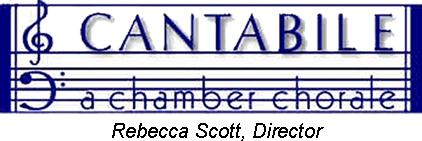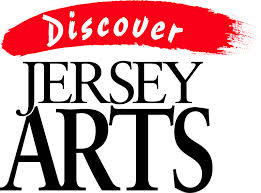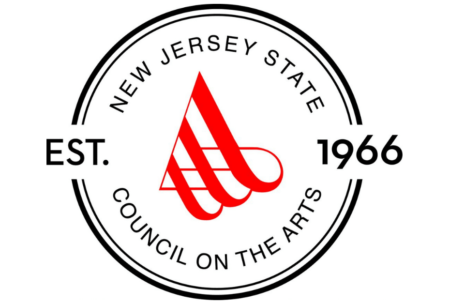Grant funding has been provided by the Middlesex County Board of County Commissioners through a grant award from the Middlesex County Cultural and Arts Trust Fund.
We are the Boat, We are the Sea
PROGRAM NOTES by Rebecca Scott
Welcome One and Welcome All by Audrey Snyder is a lively and buoyant song which is set in the style of a medieval part song like a processional at a feast. Its compound meter (three pulses to every beat) thrusts the energy forward and hemiolas in the old style (changes of meter to two pulses a beat) slow down the tempi at the cadence points.
Convidando esta la Noche (Inviting is the Night) is a villancico (a Christmas carol or spiritual song) from Mexico, which was composed in the 17th century by Mexican composer, Juan Garcia de Zéspedes (1629-1678). The energy and excitement is produced by the alternation of two and three rhythmic beats. After two verses, the refrain (el estribillo) moves quickly in the manner of a Guaracha (dance of Spanish origin). There are eight refrains, all followed by “Ay!” (Yes!) to build a sense of joy and exaltation, until the singers and dancers collapse in exhaustion.
Durme, Durme is a folk song lullaby sung in Ladino, the Judeo-Spanish Romance language of the Sephardic Jews. This language was originally written in Hebrew script and was based upon Old Spanish. The song has been updated and arranged by Audrey Snyder for four choral voices and piano. Cantabile’s performance adds the guitar and percussion. Following immediately and without pause (“attacca”) is El Rorro, a traditional Mexican lullaby carol using the original Spanish words. Arranged by Ruth Elaine Schram for three women’s voices and piano, Cantabile again adds guitar and percussion to the piano accompaniment.
De Tierra Lejana Venimos (Song of the Wise Men) is a well-known Puerto Rican Christmas carol. It is about the journey of the Wise Men to the manger, which is associated with the Feast of the Epiphany. The custom is for children to set out food and drink for the Magi and their camels, for it is the Wise Men who will bring them gifts. This arrangement by Juan M.V. Garcia, Professor of choir and conducting at the University of Franz Liszt, Weimar, Germany, is set in the style of an a cappella vocal jazz quartet. The soprano part has the melody while the four voice accompanying parts imitate sounds of various instruments mostly percussion, string bass, and woodwinds.
Saludo, Saludo (Greetings) is a traditional Puerto Rican Christmas carol. It is part of the historic, festive parranda (or trullas navidenas), which is a gathering of friends and neighbors making music together by singing, playing and dancing for their friends through the neighborhood on Christmas Eve. Everyone sings while some play instruments such as guitar, tambourines, maracas, claves, and guiro. This takes place in the community as a secular celebration and many Christmas songs (aguinaldos) are sung during this gathering. We perform an arrangement by Ruth Morris Gray, but the guitar, piano, and percussion instrumentation is our own improvisation. Performed “attacca” is A La Media Noche (At the Hour of Midnight). It is another traditional Puerto Rican Christmas Carol, and this arrangement by Greg Gilpin, is written for voices and piano with the traditional Puerto Rican instruments: claves, tambourine, guiro and congas. These carols express the excitement of the new birth through their multi- percussion instruments and through the lively dancing rhythms. Everyone gets to sing, play an instrument, and dance. It is a joyous time for families and friends to get together.
Los Coflades de la Estleya (Fellow brothers of the Star) is by Juan de Araujo (1646-1712), who was born in Spain, then went to Peru with his father where he was educated and served as a priest. He spent time in Panama and served in the Cathedral of La Plata in Sucre, Bolivia, where he died. He wrote very little music for the church but was prolific in composing villancicos with many combinations of voices and instruments from two to thirteen parts! This piece is a good example of his innovative use of syncopation in 6/8 meter, which provides an electric rhythmic drive. The rhythm changes constantly between two pulses and three pulses to a beat creating several different layers of rhythmic accents, which blend with the texts or contrast with the texts. Soloists lead the singers on the journey to the manger. The singers represent the crowd following them. Several unique situations occur in the text. “Blacks who work at court” and “Blacks from Safala” are encouraged to come. Five names are mentioned as participating: Flasico (Fransisco), Blasico (Blas), Pellico (Pedro), Zuanicoy (Juan) and Tomá (Tomás). Gifts from Angola are brought. The language is in Spanish Creole with many words borrowed from African and Amerindian. “Gulumbé” defies translation but is part of the rustic dance movement :Guaché.
Composer Jesús López Moreno (b.1971) wrote that En Paz “is an introspective reflection by the poet Amando Nervo (1870-1919) on his own life, allowing us to see through a quick analysis how he built the environment around his life.” It is summed up in the following statement: “I was the architect of my own destiny.” Amado Nervo’s primary legacy is introspective poetry exploring themes of inner struggle, religious reflection (both through his native Catholicism and Buddhist teachings) and their intersections in the path to finding peace. He led a full life as a journalist, literary professor and diplomat. The composer Moreno has extensive experience working with school-age children through serving as artistic director of the children’s choir at Valle de Chalco in the Estado de México and as principal organist of the Cathedral Metropolitan in Mexico City. His compositions for children’s choir have been featured on several recordings throughout Mexico. He recently won a national children’s choir composition contest organized by Conaculta, the National Council for Culture and the Arts. He has also composed works for organ, choir, baroque orchestra, and harpsichord and a concerto for organ and orchestra. He was a member, and later the acting director, of the Niños Cantores de Morelia. He founded the Cantate Domino children’s choir of the Parroquia Del Espiritu in Ecatepec Edo Mex and conducted the children’s choir at the Cantorum school of Mexico. Moreno graduated from the Concervatorio de las Rosas de Morelia where he studied composition. He studied organ at the Antique Mexican Music Academy for Organs and the National School of Music of the National Autonomous University of México. In 2009-2010, he participated as a composer-in-residence in Minnesota schools through the VocalEssence ¡Cantaré! program. We are grateful that VocalEssence has published this work and introduced this composer to the United States.
David L. Brunner’s (b.1953) setting of Elizabeth Bishop’s sonnet, I Am In Need of Music, written when she was 17 years old, expresses the poetry in lush and gently rocking phrases, like a lullaby. A commission written in memory of his teacher, David Nott at Illinois Wesleyan University, the melodies are “deep, clear and liquid- slow,” reflective, intimate and comforting. In the midst of all the loud, pulsing rhythms of life, this song creates for us a rest, a “healing, swaying” moment in our program that can continue in our days ahead, in the craziness of the holiday season.
“I am in need of music” could be the motto for every human being that sings or plays an instrument and certainly for our chorale. For people who earn their livelihood in some other area than the arts, weekly gatherings in the performing arts – to sing, dance or play instruments with others – reduce the stress of life and create joy in the friendships created. These days, there is much music to hear, but expressing the music is a gift to oneself and to others. “I am in need of music” is a truth for all of us.
American poet and writer, Elizabeth Bishop (1911-1979) won the Pulitzer Prize for Poetry in 1956 and the National Book Award in 1970, and was the recipient of the Neustadt International Prize for Literature in 1976.
Somos El Barco is a song of global unity that has been performed by Pete Seeger, Arlo Guthrie, the Clancy Brothers, other folk singers, and audiences all over the world. The song was created in 1973 when composer Lorre Wyatt was a member of the singing crew on the environmental sloop Clearwater. The Hudson River Sloop Clearwater, Inc. is a non-profit organization founded by folk singer Pete Seeger with his wife Toshi Seeger in 1966. The organization is known for its sailing vessel and for its annual music and environmental festival, the Great Hudson River Revival. Clearwater, Inc. gained national recognition for its activism starting in the 1970s to force a clean-up of the PCB contamination caused by industrial manufacturing on the river’s edge. It played a key role in the Environmental Protection Agency (EPA) decision to compel one of the Hudson River’s biggest polluters to begin removing toxic PCBs from the water and restoring one of the most polluted portions of the river. Somos El Barco is a cry to us all to work together to keep our earth healthy and our hearts compassionate. It has the rhythmic feel of a boat gently swaying in the water with all of us aboard. We must keep moving towards world peace and unity by realizing that we are all in the “same boat!”
Composer, conductor, teacher and producer James Papoulis’s work, Give Us Hope, focuses on combining the music of his roots – classical and jazz – with the rhythms and influence of worldbeat, folk and multi-ethnic sounds. His compositions for choirs, orchestras, string quartets and chamber ensembles have been performed worldwide. In 2000, he co-founded the Foundation for Small Voices. Give Us Hope is from one of its concert projects SOUNDS OF A BETTER WORLD = small voices calling, a series of songs focusing on children, which examines their world and how small steps can be made to improve it. The composer writes, “What I have come to understand is that we must send the best part of ourselves into the future through our children.” Visit: soundsofabetterworld.org. All royalties from this song are donated to Foundation for Small Voices.


